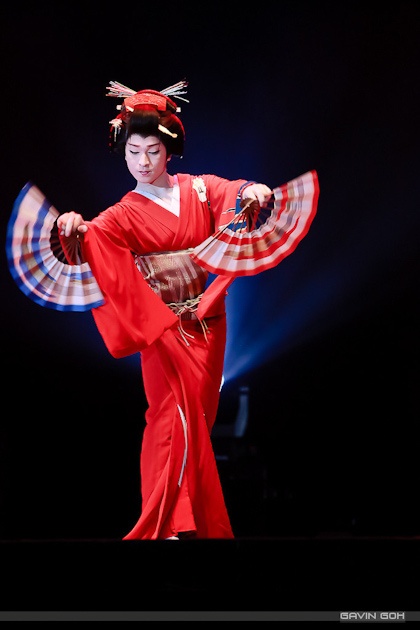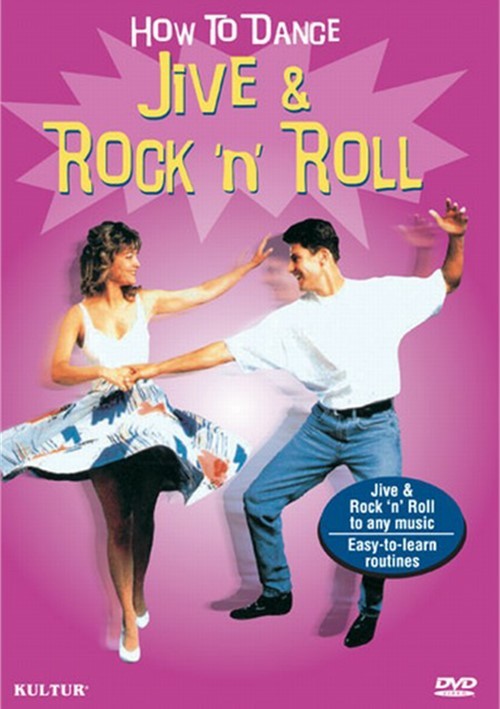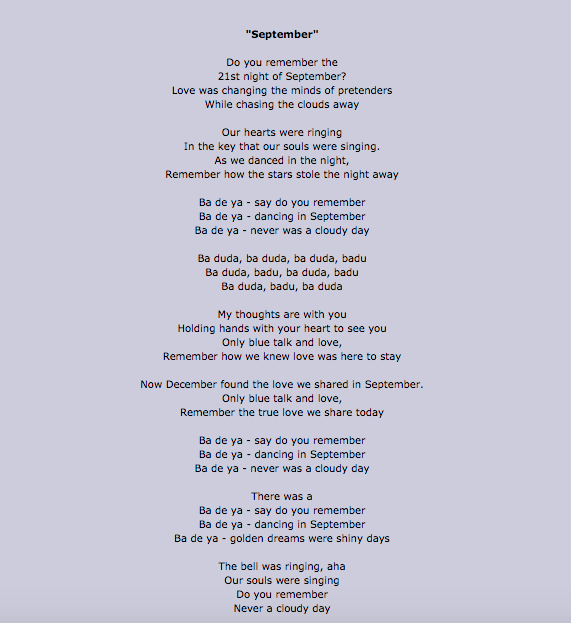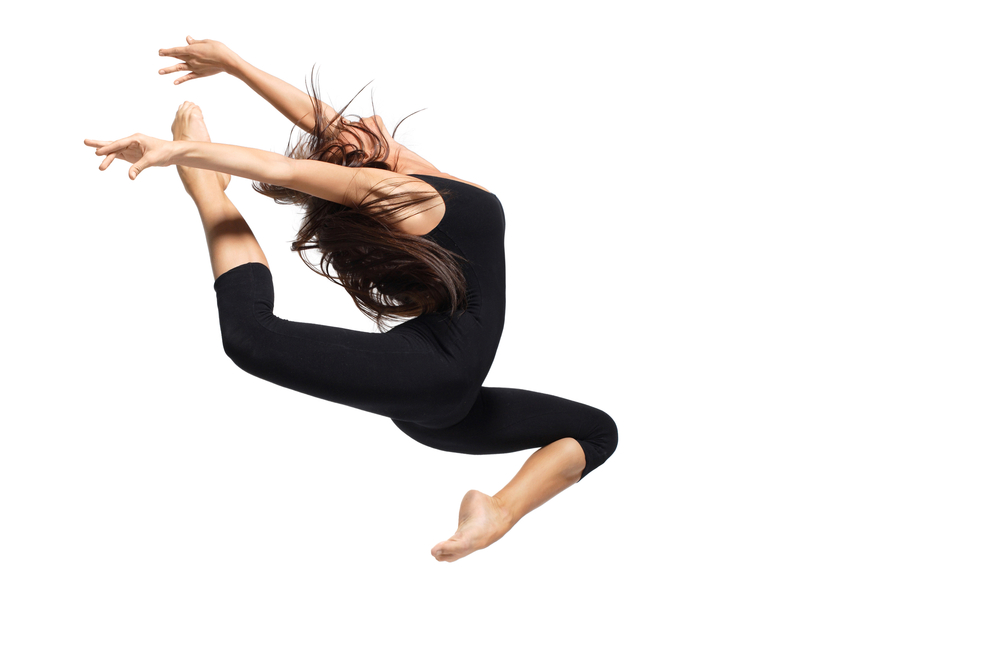How to chinese fan dance
FOLK DANCE, FOREIGN AND ETHNIC DANCES: MODULE 29: Chinese Fan Dance (China)
I. Objectives:
At the end of the lesson, the students are expected to:
a. identify Chinese fan dance;
b. explain the history of Chinese fan dance;
c. classify the costumes or props use in Chinese fan dance; and
d. demonstrate the different steps in Chinese fan dance.
II. Overview:
The art and tradition of the Chinese fan dance have captivated audiences for two thousand years. Just one of many forms of traditional folk dances, fan dances has been preserved to share the stories and beauty of Chinese culture.
III. Learning Content:
Chinese Fan Dance the Chinese fan dance is performed in celebration of Chinese culture. It represents beauty, grace and delicacy, according to the Chinese Educational Development Project. It also expresses feelings of joy. The dance is composed of consistently changing rhythms paired with consistently changing body positions. Feather fans and silk fans both are part of the traditional Chinese dance that has its roots in the Han Dynasty, circa 206 BC.
History
While archaeologists have found pottery depicting Chinese folk dances dating from about 4000 to 2000 BC, the fan dance is believed to have begun during the Han dynasty. This dates the fan dance to around 200 AD. It was also during the Han dynasty that the first effort was made to collect and preserve the country's folk dances. Thankfully, this practice became important to following generations and folk dances of old are still shared today.
Classifications
Chinese dance was divided into either civilian or military dance and their movements can vary based upon the classification.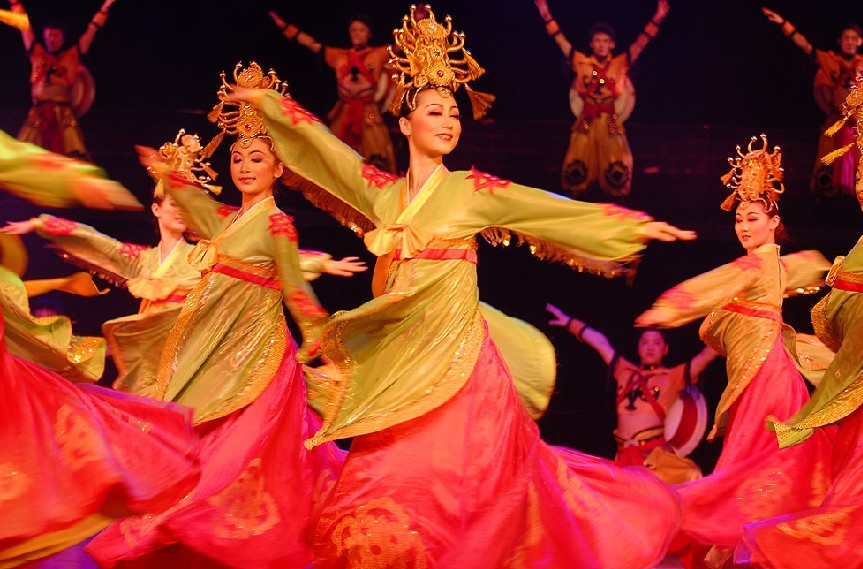 Civilian fan dances tend to be more flowing and detailed, celebrating grace and beauty. They derived from early dances celebrating the distribution of the food gathered from hunting and fishing; people would dance holding feathered banners. The military dancing was done with weapons, in coordinated group movements. This evolved into the movements used in military exercises.
Civilian fan dances tend to be more flowing and detailed, celebrating grace and beauty. They derived from early dances celebrating the distribution of the food gathered from hunting and fishing; people would dance holding feathered banners. The military dancing was done with weapons, in coordinated group movements. This evolved into the movements used in military exercises.
Function
Like most other forms of folk dance, the Chinese fan dance developed as a way to share stories, preserve the culture and to communicate feelings and emotions without words. This form of communication and preservation was vitally important to the Chinese, as dances were created even before written symbols. Chinese fan dances include a specific type of semantics, symbolism, vocabulary and structure so as to allow the dancer to communicate her intentions.
The fans are used to highlight the graceful movements of the dancers and as extensions of very delicate poses.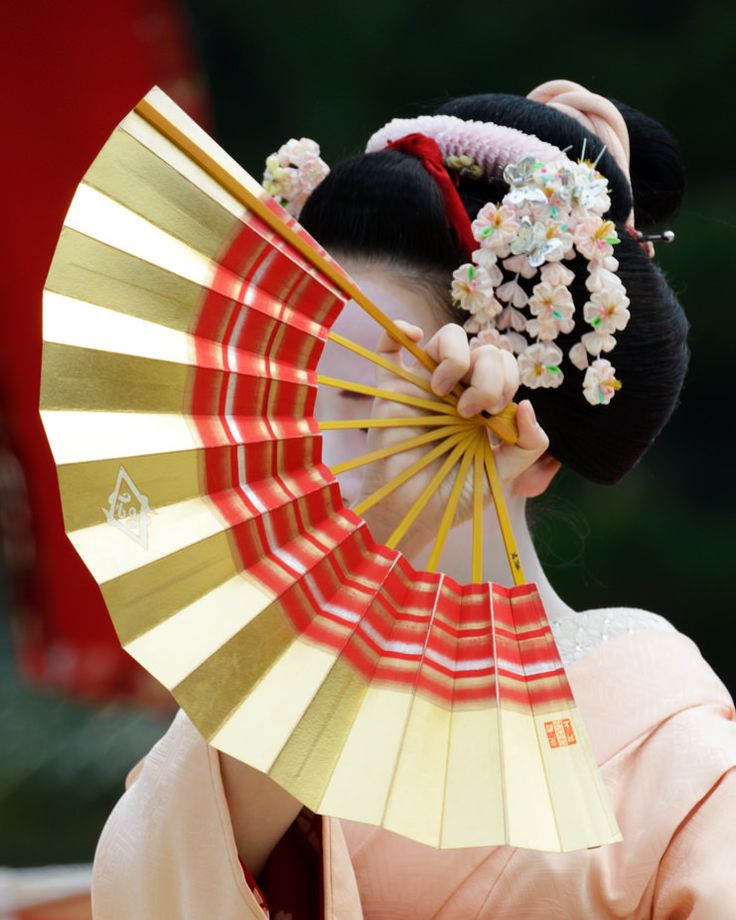 They can be used as a sort of prop, representing a basket of food, a gift or a found treasure. The fans are made of a variety of materials including feathers, paper or bamboo and they reflect the highest level of craftsmanship and artistry.
They can be used as a sort of prop, representing a basket of food, a gift or a found treasure. The fans are made of a variety of materials including feathers, paper or bamboo and they reflect the highest level of craftsmanship and artistry.
Different kinds of fans
Japanese flat fan (uchiwa)
Japanese fans are made of paper on a bamboo frame, usually with a design painted on them. In addition to folding fans (ōgi), the non-bending fans (uchiwa) are popular and commonplace. The fan is primarily used for fanning oneself in hot weather.The fan symbolizes friendship, respect and good wishesThey are given on special occasions, and they are also an important stage prop in Japanese dance.
STEPS:
1. Get fans made of feathers or silk and hold them in each hand while standing. With your arms held out to each side, begin fluttering the fans while raising them above your head and lowering to the side. This step may be repeated throughout the choreography by facing different directions or including walking steps. As the choreography varies, the specific techniques of opening, closing and fluttering the fans remain.
This step may be repeated throughout the choreography by facing different directions or including walking steps. As the choreography varies, the specific techniques of opening, closing and fluttering the fans remain.
2. Rhythmic Changes
After lowering the arms while fluttering the fans, bring your arms in front of you (as if you are reaching for something). With a count of 8, open and close the fans by turning your wrists in and out. Repeat for another count of 8. Continue by tilting your upper body to one side while raising one arm overhead while the other arm is out to the side. Remember to keep fluttering the fans throughout all the arm and torso position changes. Lower arms back to the start position with arms to the side.
3. Positions of Power
Bend your knees, moving up and down, while fans are held close together and arms are outstretched in front of you. You'll turn your torso to the right and left (see Fun Dance Workshop at dancemedia.com). Raise your arms abruptly overhead while crossing one fan in front of the other. Hold this position for a few seconds as this pose represents power. The dance will either continue with new positions or repeat the positions introduced earlier.
You'll turn your torso to the right and left (see Fun Dance Workshop at dancemedia.com). Raise your arms abruptly overhead while crossing one fan in front of the other. Hold this position for a few seconds as this pose represents power. The dance will either continue with new positions or repeat the positions introduced earlier.
THE UNTOLD STORY OF PETBE: CHINESE FAN DANCE (Chinese)
This is a simple but interesting dance especially suitable for girls.
COSTUME
Girl - Chinese blouse and long, loose drawers of any color. Chinese sandals, a big fan.
MUSIC - is divided into six parts: A, B, C, D, E and Finale.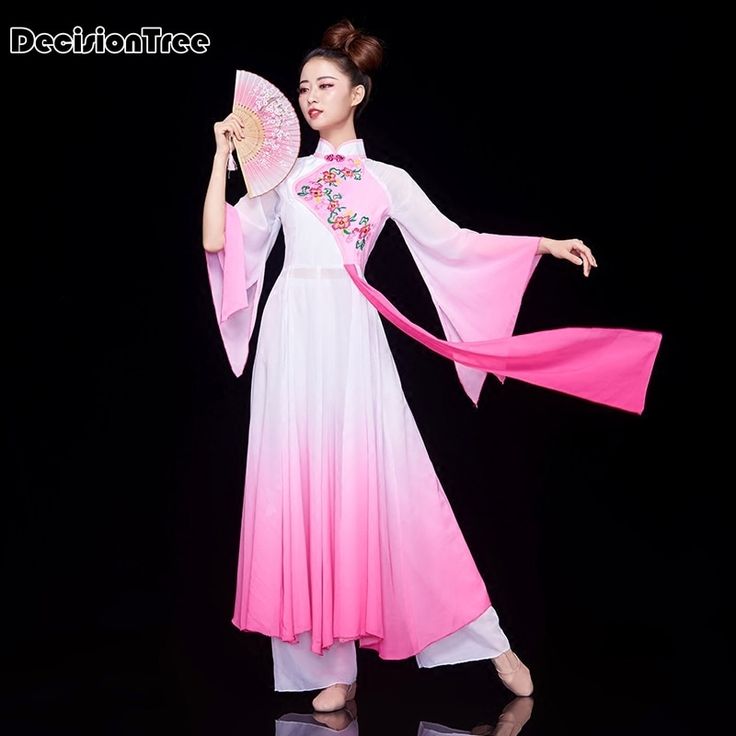
COUNT - one, two, or one, and, two to a measure.
FORMATION - One to any number of participants may take part in this dance. If many are taking part they may be arranged in any desired formation.
PART I (Music A - play once)
(a) Pause (2 M) ... 2 M
(b) Shuffling steps forward to place. Arms folded in front, hands tucked inside sleeves. The fan is kept in one pocket of left hanging at the right side of the waist. They body is swayed very slightly to right (1 M) and left side (1 M) alternately for seven measures ... 7 M
PART II (Music B - play two times)
(a) Take a small jump forward, bending knees slightly. Arms are still folded in front. Bend head forward as the jump is made (cts. 1, 2). Slowly straighten knees and raise head to erect position (cts.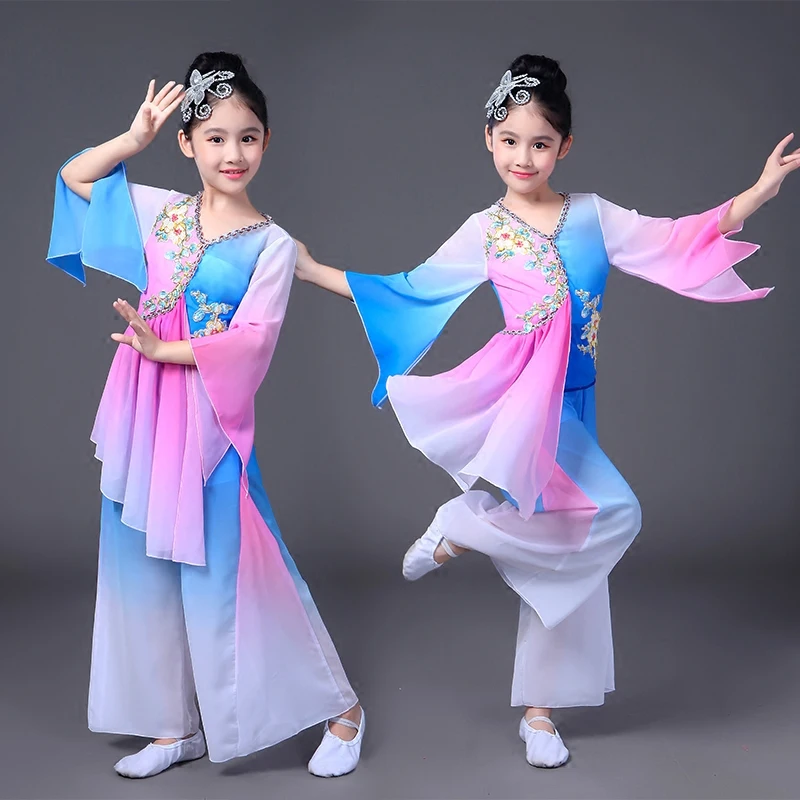 1, 2) ... 2 M
1, 2) ... 2 M
(b) Repeat (a) three more times ... 6 M
(c) Repeat (a) and (b), jumping backward ... 8 M
PART III (Music C - play once)
(a) Swing R foot forward (ct. 1), swing the same foot sideward right (ct. 2), three steps in place (R, L, R) (cts. 1, and, 2). Arms still folded in front. Twist the body a little to the right as the R foot is swung to the side ... 2 M
(b) Repeat (a) to the left, starting with the L foot ... 2 M
(c) Repeat (a) and (b) ... 4 M
PART IV (Music C - play once)
(a) Step R foot sideward (ct. 1) close L to R foot (ct. 2). Arms in reverse "T" position, forefingers pointing upward (the other four fingers are loosely closed) . .. 1 M
.. 1 M
(b) Bend knees slightly at the same time, dipping both hands toward the chest without lowering the elbows and nodding head forward (ct. 1), straighten knees and head, hands return to first position (ct. 2) ... 1 M
(c) Repeat (a) and (b) to left side, starting with the L foot ... 2 M
(d) Repeat all (a-c) ... 4 M
PART V (Music D - play two times)
(a) Take fan and open. Hold with the R hand and cover face so eyes just show. Turn head to right (cts. 1, 2), turn to front (cts. 1, 2), turn to left (cts. 1, 2), turn to front again (cts. 1, 2) ... 4 M
(b) Close the fan and strike it lightly against the palm of the L hand (four taps for every count). Move L hand from sideward left - overhead - sideward right (4 M). The fan is continously tapped against the palm ... 4 M
The fan is continously tapped against the palm ... 4 M
(c) Kneel and sit on heels ... 1 M
(d) Repeat all ( a and b) in kneeling position ... 8 M
(e) Stand and keep fan ... 1 M
PART VI (Music E - play once)
(a) Point R foot in intermediate in front (obliquely), bend L knee slightly. Point R forefinger to R foot and look at the R foot at the same time (ct. 1). Put the feet together and straighten knees, arms in reverse "T" position, forefingers pointing upward (ct. 2). Raise the heels (ct. 1) lower heels (ct. 2) ... 2 M
(b) Repeat (a) with L foot and L hand ... 2 M
(c) Repeat (a) and (b) ... 4 M
PART VII (Music E - play once)
(a) Take fan and open with the R hand, starting with the R foot, execute shuffling steps forward moving clockwise. Hold fan at the chest level, fanning vigorously. Bend the body slightly forward. (8 cts.) ... 4 M
Hold fan at the chest level, fanning vigorously. Bend the body slightly forward. (8 cts.) ... 4 M
(b) Turn right about. Repeat (a), counterclockwise (8 cts.) ... 4 M
FINALE (Music Finale)
(a) Close fan and keep. Bow low (1 M), straighten trunk (1 M). Repeat once more (2 M) ... 4 M
(b) Three-step turn right in place and bow low ... 3 M
Note: The exit may be done as in fig. 1. Use the same music.
Chinese fan dance (part 1)
1
+1
0
| Folk dances
Dances of the peoples of the world
Chinese fan dance
The traditional Chinese fan dance was born in China more than two thousand years ago. The ancient form of folk dance, the fan dance, is believed to serve various purposes and is highly regarded by the Chinese.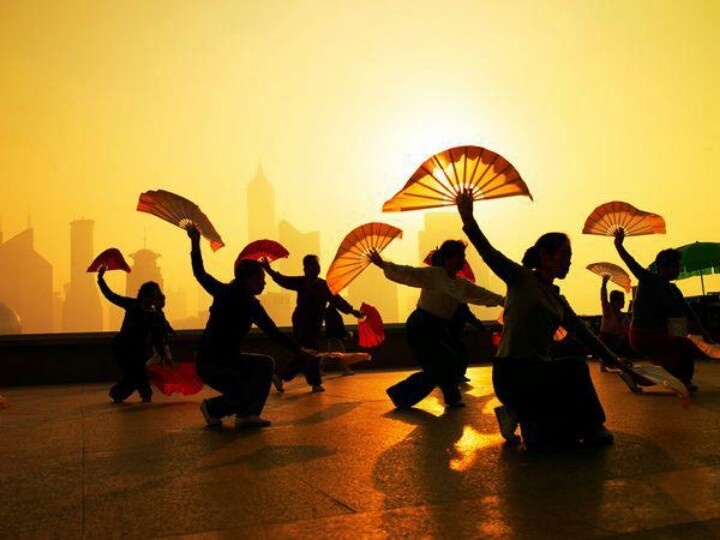
Chinese fan dance
Why the Chinese fan dance
Chinese fan dance has its own ideology. First, it is used to help preserve the history and traditions of Chinese culture. Both tourists and younger Chinese generations learn classical lore and gain knowledge of China's past simply by watching fan dancers. That is why you can often see fan dancers at festivals, theatrical performances and other social events. Secondly, the fan dance also serves as entertainment. And this is not surprising - after all, such a colorful spectacle is unlikely to leave anyone indifferent. nine0004
Chinese fan dance
Also Chinese fan dance is a very good physical workout for its participants. Like many other forms of dance, fan dance choreography requires a great deal of physical fitness. Attendance at trainings at the same time well bring up a sense of responsibility.
Chinese Fan Dance
History
The fan dance has its origins in the Han Dynasty and dates back to around 200 AD.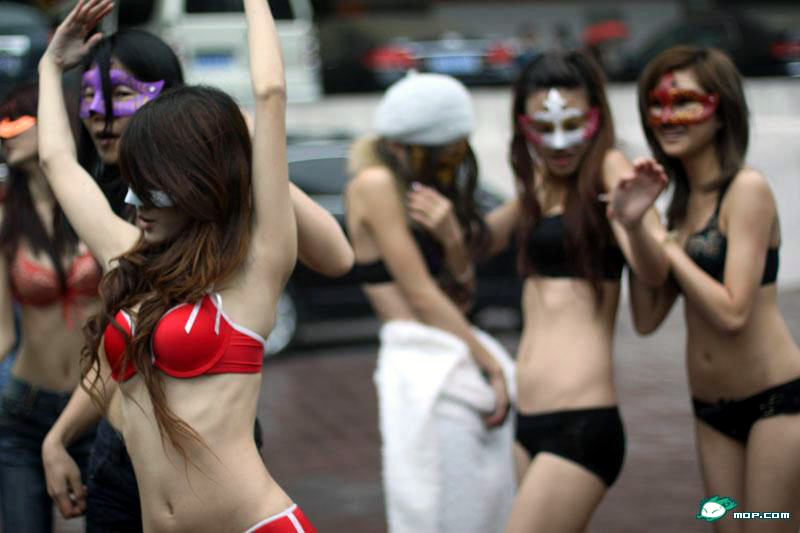 The Han Dynasty was the first to appreciate and develop this art form. Therefore, this dance, for sure, has survived to this day. The uniqueness of the dance and the similar interest in it of the ruling dynasty allowed the fan dance to pass through the generations, and become more of a family tradition than a refined studio-oriented art. nine0004
The Han Dynasty was the first to appreciate and develop this art form. Therefore, this dance, for sure, has survived to this day. The uniqueness of the dance and the similar interest in it of the ruling dynasty allowed the fan dance to pass through the generations, and become more of a family tradition than a refined studio-oriented art. nine0004
Chinese fan dance
Classification
Historically, fan dancing has been classified into two categories: civil and military. Most who learn this art perform a civil form of dance. These are ballet-like, graceful movements that use fans and other props, such as feathered flags, to enhance the beauty of the dance.
China, dance, fan, art
Share link
Blog tags
Find a tag:
Follow @4dancing
4dancing
Small mosaic
large mosaic
Chinese fan dance. Folk Chinese dance
Each nation has its own unique traditions. Travelers who come to China often admire the colorful local customs, national clothes in a unique style, original holidays, unusual cuisine that combines sweet and spicy... Chinese dance occupies a special place in Eastern culture.
Cultural Traditions of China
The Chinese, like no other people, treat their national culture with care: they honor the traditions of their ancestors and do not seek to borrow the customs of other peoples. From ancient times to the present day, the traditions of greetings, wedding ceremonies, family relationships, the tea ceremony, hieroglyphs, the specific sound of musical instruments, and Chinese folk dance have come down almost unchanged.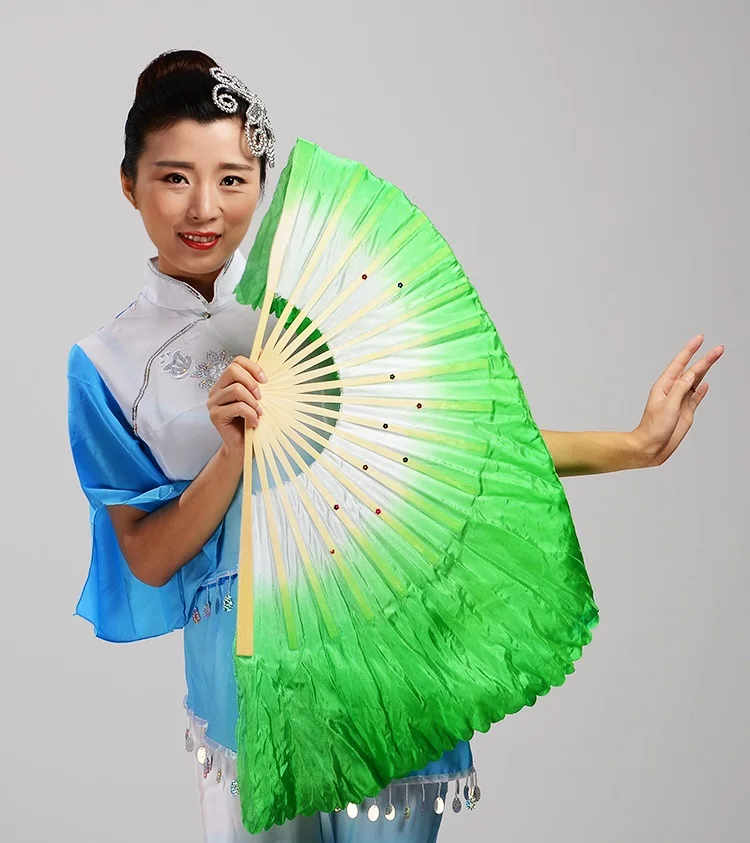 Surprisingly, the rapid modernization of the country had practically no effect on its traditional positions. The unity and strength of a nation lies in its great culture, thanks to the preservation of which a billion-strong society lives in stability and harmony. nine0004
Surprisingly, the rapid modernization of the country had practically no effect on its traditional positions. The unity and strength of a nation lies in its great culture, thanks to the preservation of which a billion-strong society lives in stability and harmony. nine0004
Chinese dances
There are many ethnic groups in China. Each of them has its own shade of cultural traditions. This applies to dance as well. However, in every province there is always a dance in which such an attribute as a fan is used. At almost every festival, you can see a Chinese folk dance with this item. Dancers in bright colorful costumes move gracefully, like in a ballet, emphasizing their movements with a miniature fan. A festively decorated fan can fold and open, make big swings and barely flutter, shimmering with its patterns, with an airy border along the upper edge. nine0004
Today, the fan dance is performed both in national costumes and in ordinary clothes for a studio production. It can be learned from friends, in the family circle. This art is widely taught in schools. Children's dance (Chinese), according to parents, should teach the younger generation to respect and cherish the traditions of their people. This is given such great importance that often the fan dance is included in the school curriculum.
It can be learned from friends, in the family circle. This art is widely taught in schools. Children's dance (Chinese), according to parents, should teach the younger generation to respect and cherish the traditions of their people. This is given such great importance that often the fan dance is included in the school curriculum.
At its core, this is not a studio number, but more of a family tradition that is passed down from generation to generation. nine0004
Varieties of action
There are two varieties of this dance: civil and military. Most often you can observe the civil form of execution. It is more smooth, graceful, sliding, the movements of the participants are aimed at expressing beauty, tranquility. In addition to creating the necessary composition, according to the production, very often the performers improvise.
Military Chinese dance imitates various kinds of fighting movements, it can be seen during military parades, exhibitions. A weapon is usually used instead of a fan. But the techniques are very similar in both types, just a military arrangement requires more clear and tough movements. Very often in the military dance there are elements of martial arts. nine0004
But the techniques are very similar in both types, just a military arrangement requires more clear and tough movements. Very often in the military dance there are elements of martial arts. nine0004
The birth of Chinese dance
The history of Chinese dance goes back to the 4th millennium BC. Ritual group movements are gradually reborn into real art. The movements could be both smooth and dynamic. Increasingly, additional attributes were used to give brightness and originality to the action - scarves, fans, feathers.
Chinese fan dance originated during the Han Dynasty. The Han Empire lasted longer than any other in Chinese history (206 BC - 220 AD) and was marked by cultural and economic flourishing. The imperial family tried to collect all the dances existing in the country and document them. After their reign, the main ethnic group was called "Han". nine0004
Historians and culturologists are convinced that it is thanks to the efforts of the representatives of the mentioned dynasty that various traditional Chinese dances, including the amazingly beautiful performance with fans, have come down to our times.
Dragon and Lion
During the celebration of the New Year, the dance of the Dragon and the Lion is obligatory. These traditional Chinese rituals are not dances in the usual sense. In the first case, a group of people is holding a huge dragon doll on poles, on average 25-35 meters in length. The dragon must move in undulating motions. It is believed that the larger and longer the scarecrow, the more luck it will bring in the coming year. The team that controls the puppet sometimes includes up to 50 people. During the celebration, there may be several dragons. nine0004
During the performance of the Lion dance, the puppet is also the main character, and not the artists who make it move. The lion is much smaller than the dragon and is controlled by only two people inside the figure. The elements of the dance are derived from martial arts movements.
Court craftsmanship
The so-called court dances created and performed in ancient times at the emperor's court are not forgotten. These are, for example, the dance of Prince Qin's cavalry, the dance of Nishan Yui, Qipan, Baiyu, and others. Let's consider one of them in more detail. nine0004
Prince Qin's cavalry dance celebrates the strength and might of his army. He had to show the courage, the greatness of the warriors, the readiness to repel the blow of the enemy at any moment. The emperor himself composed the music and invented the movements of the performers. A huge number of participants were involved in the performance: more than a hundred dancers, singers, musicians. The performance depicted battle scenes. First they demonstrated combat training, formation, then they simulated episodes of battle and victory. Note: no defeat! Always only victories! nine0004
Fans in other cultures
The fan dance is known not only in Chinese culture. There is a Japanese, Korean dance, which has no less deep roots and its own specific differences. The period of the reign of Emperor Jimmu (according to various sources, around 600 BC or around 300 BC) is considered to be the time of the appearance of Japanese dance with a fan, at whose court performances with this accessory were often staged.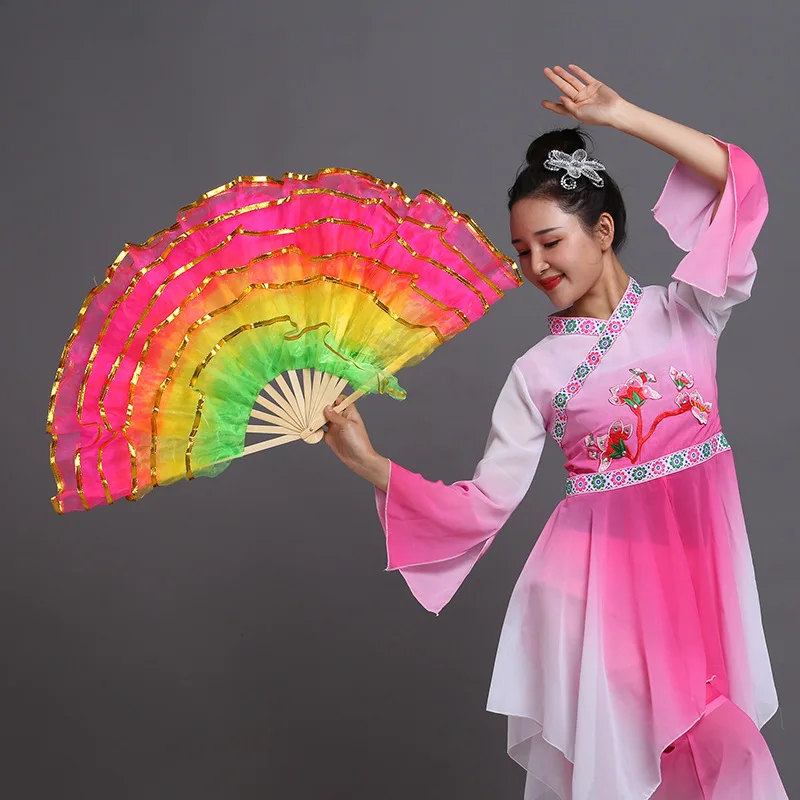 In the Japanese production, single performances are more common. The dance is very slow, calm, its simple monotonous elements are also complemented by improvisation. A special role is given to the fan. Its beauty is put forward in the first place, so the lion's share of efforts goes into the manufacture of this item. For special receptions, Japanese masters could make a sandalwood fan with ivory, mother-of-pearl, gold and precious stones. nine0004
In the Japanese production, single performances are more common. The dance is very slow, calm, its simple monotonous elements are also complemented by improvisation. A special role is given to the fan. Its beauty is put forward in the first place, so the lion's share of efforts goes into the manufacture of this item. For special receptions, Japanese masters could make a sandalwood fan with ivory, mother-of-pearl, gold and precious stones. nine0004
In the 1930s, fan dancing appeared in America and quickly became very popular there.
Chinese dance in the ballet "The Nutcracker"
Oriental culture once inspired Pyotr Tchaikovsky. In his brilliant ballet The Nutcracker, first presented on December 6, 1892 at the Mariinsky Theater, there was a place for a Chinese dance with fans. In the second act, after the arrival of Clara and the Nutcracker and before the Waltz of the Flowers, there is a divertissement (an addition to the performance, an "inserted" number that is not connected with the plot), representing the inhabitants of the sweet city of Konfetenburg. All the sweets you can imagine - sherbet, lollipops, candied fruit, marshmallows, gingerbread, marmalade, chocolate, nuts, caramel - you can drink chocolate, tea or coffee. In honor of these three drinks, 3 acts were staged. The dance of "Tea" was declared by Tchaikovsky as Chinese, "Coffee" - Arabic, "Chocolate" - as a Spanish dance. nine0004
All the sweets you can imagine - sherbet, lollipops, candied fruit, marshmallows, gingerbread, marmalade, chocolate, nuts, caramel - you can drink chocolate, tea or coffee. In honor of these three drinks, 3 acts were staged. The dance of "Tea" was declared by Tchaikovsky as Chinese, "Coffee" - Arabic, "Chocolate" - as a Spanish dance. nine0004
The first divertissement is opened by Chocolate, bringing with it the sounds of trumpets, castanets, red robes. It is followed by Coffee - unhurried, thoughtful, like the frozen heat of the Arabian desert. Delicate violins are complemented by cellos. Next comes Chai.
Chinese dance "Tea" is performed in the style of Chinese folk performance with fans. At the same time, in some productions, other objects are used instead of them, and sometimes the entire emphasis is placed purely on the location of the hands and the corresponding movements, reminiscent of a possible fan. The dancers are dressed in costumes with national symbols. Tchaikovsky diversified the Chinese dance by combining the high and low registers of the flute and bassoon, creating a slightly comical, as if toy, effect.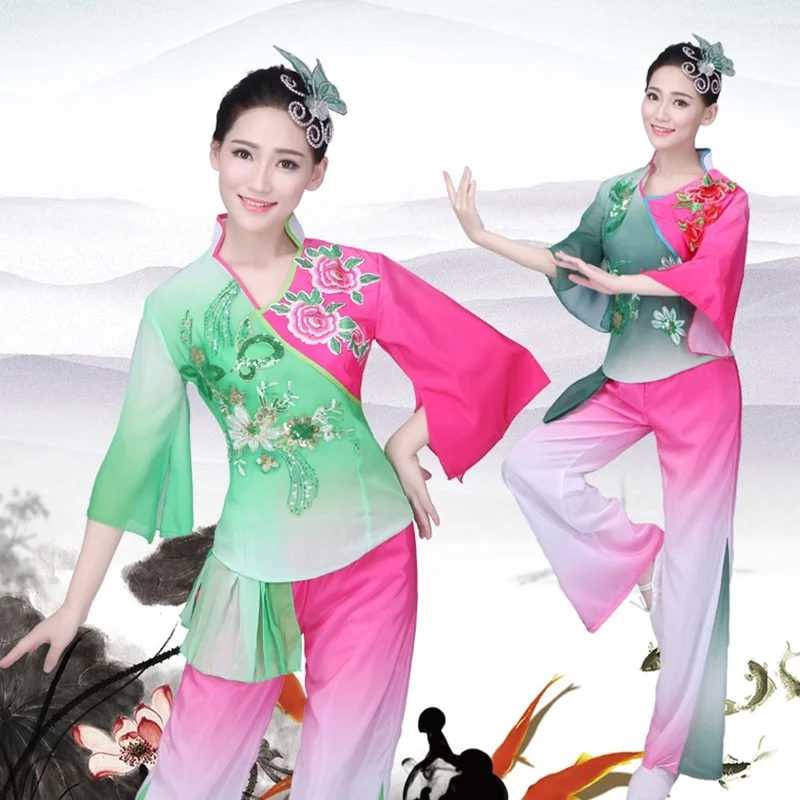 nine0004
nine0004
The divertissement is completed by an adaptation of the Russian dance “trepak”, a performance by shepherd boys and a comic number by Mamasha Zhigon.
The Chinese Nutcracker dance demonstrates the complexity of ballet dance movements that require long-term training, special skills, and efforts.
Modern Attitude
Nowadays, interest in working with fans is growing. This beautiful simple art can be learned not only in China, Japan and Korea, but also in other countries. nine0004
Although the performance is somewhat reminiscent of ballet (fluidity, tact, grace), the movements are not so complex, and the staging itself serves other purposes. Classical Chinese dance focuses on expressiveness and coordination, the complexity of the techniques fades into the background. It's great for kids. The simplicity of the repeating elements and the colorfulness of the costumes and attributes make it possible to widely use this art in children's institutions.